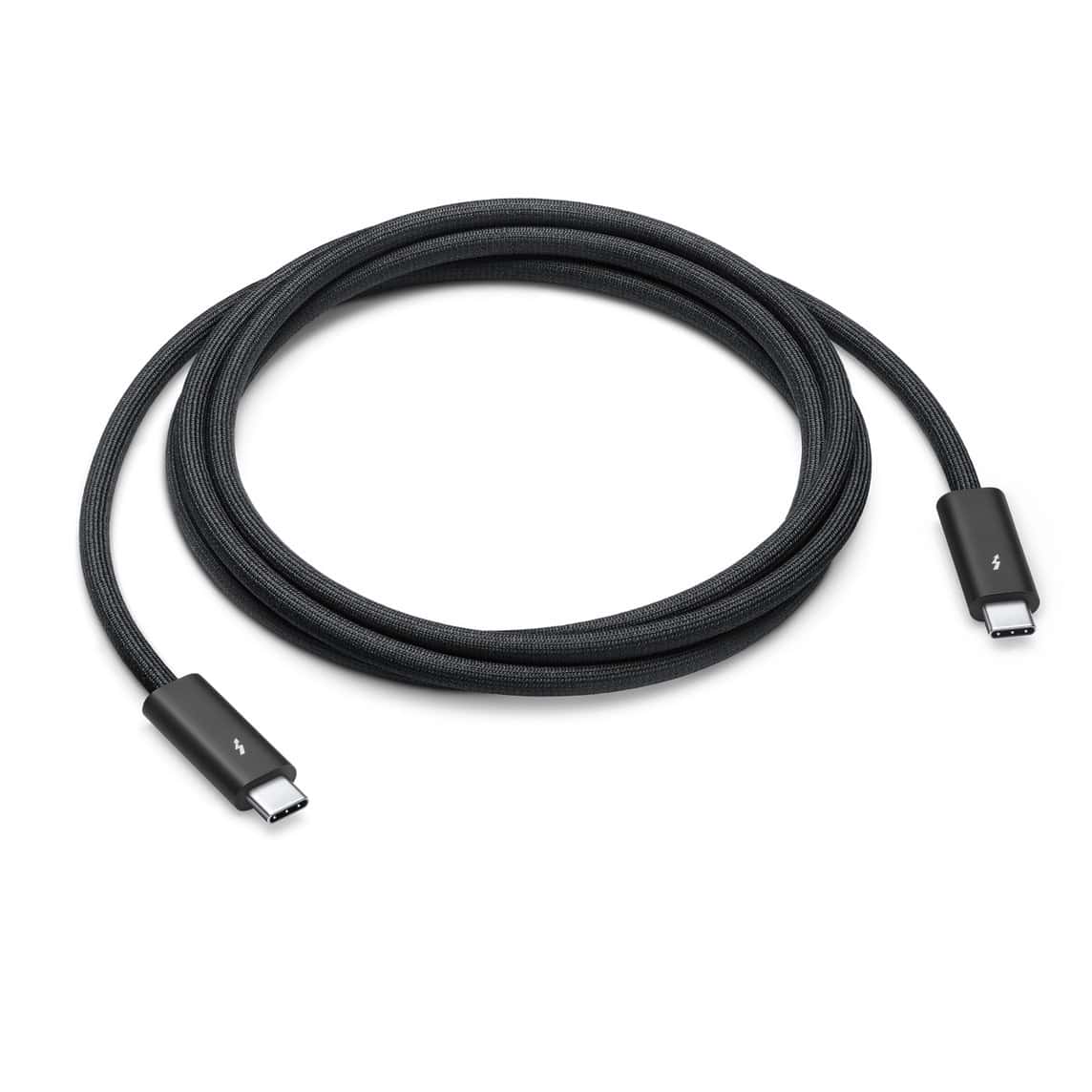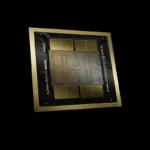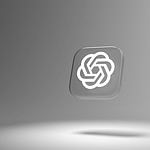Thunderbolt and USB-C connectors look similar, but they serve different purposes. Thunderbolt offers faster data transfer speeds and more versatility than standard USB-C. Thunderbolt 3 can transfer data at up to 40 Gbps, while USB-C typically tops out at 10 Gbps.
You might wonder if Thunderbolt cables work with USB-C ports. The good news is that Thunderbolt 3 and 4 cables are backward compatible with USB-C devices. This means you can use a Thunderbolt cable to connect USB-C devices, though you’ll be limited to USB-C speeds.
When choosing between Thunderbolt and USB-C, consider your needs. If you work with large files or need to connect multiple high-resolution displays, Thunderbolt is the better choice. For everyday tasks like charging your phone or transferring small files, USB-C is often sufficient.
| Feature | Thunderbolt 3/4 | USB-C (3.2 Gen 2) |
|---|---|---|
| Max Speed | 40 Gbps | 10 Gbps |
| Video Support | Up to two 4K displays | Single 4K display |
| Power Delivery | Up to 100W | Up to 100W |
| PCIe Support | Yes | No |
Connecting Thunderbolt and USB-C: What You Need to Know
Thunderbolt and USB-C are popular connection standards for computers and other devices. They look the same, but they have some key differences. This article will help you understand those differences and how to connect Thunderbolt and USB-C devices.
What is Thunderbolt?
Thunderbolt is a high-speed connection standard that carries data, video, and power. It was developed by Intel and Apple. Thunderbolt uses the USB-C connector, but it also supports the older Thunderbolt connector.
Key features of Thunderbolt:
- High bandwidth: Thunderbolt 3 and 4 offer speeds up to 40 Gbps. This is much faster than USB-C.
- Versatile: Thunderbolt can connect to displays, external hard drives, and other devices.
- Power delivery: Thunderbolt can deliver up to 100 watts of power. This is enough to charge most laptops.
What is USB-C?
USB-C is a newer connector standard that is becoming increasingly common. It is used for data transfer, video output, and power delivery. USB-C is smaller and more versatile than older USB connectors.
Key features of USB-C:
- Universal: USB-C is used by many different devices, including phones, laptops, and tablets.
- Reversible: You can plug in a USB-C connector either way up.
- Different data transfer speeds: USB-C supports different data transfer speeds, ranging from 5 Gbps to 40 Gbps.
Can you connect Thunderbolt to USB-C?
Yes, you can connect Thunderbolt devices to USB-C ports. However, there are a few things to keep in mind:
- Not all USB-C ports support Thunderbolt. You need a USB-C port that is specifically labeled as Thunderbolt compatible.
- Thunderbolt devices will work with USB-C ports, but they may not operate at full speed. This is because USB-C ports typically have lower bandwidth than Thunderbolt ports.
- You can use a Thunderbolt to USB-C adapter. This will allow you to connect a Thunderbolt device to a USB-C port that does not support Thunderbolt. However, the adapter will limit the speed of the connection.
Here’s a table summarizing the compatibility between Thunderbolt and USB-C:
| Connection | Thunderbolt port | USB-C port (Thunderbolt compatible) | USB-C port (not Thunderbolt compatible) |
|---|---|---|---|
| Thunderbolt device | Works at full speed | Works at full speed | Works at reduced speed (or may not work at all) |
| USB-C device | Works at USB-C speed | Works at USB-C speed | Works at USB-C speed |
Thunderbolt 4: The Latest Standard
Thunderbolt 4 is the latest version of the Thunderbolt standard. It offers the same 40 Gbps speed as Thunderbolt 3, but it also includes some new features:
- Improved PCIe tunneling: This allows for faster data transfer between devices.
- Support for longer cable lengths: Thunderbolt 4 supports passive cables up to 2 meters long.
- Mandatory Intel VT-d DMA protection: This helps to prevent security attacks.
If you’re looking for the fastest and most versatile connection standard, Thunderbolt 4 is the way to go.
Choosing the Right Cable
When connecting Thunderbolt and USB-C devices, it’s important to choose the right cable. Here are a few things to consider:
- Speed: Make sure the cable supports the speed you need.
- Length: Choose a cable that is the right length for your needs.
- Power delivery: If you need to power a device, make sure the cable supports power delivery.
You can find Thunderbolt and USB-C cables at most electronics stores. Be sure to check the packaging to make sure the cable meets your requirements.
Understanding Thunderbolt and USB-C Technologies
Thunderbolt and USB-C are advanced connectivity standards that have revolutionized data transfer and device compatibility. These technologies offer high-speed data transmission, power delivery, and video output capabilities through a single port.
Historical Context and Developments
USB (Universal Serial Bus) emerged in the 1990s as a standard for connecting peripherals to computers. It evolved through several versions, each improving speed and functionality. USB 2.0 offered 480 Mbps transfer rates, while USB 3.0 increased this to 5 Gbps.
Thunderbolt, developed by Intel and Apple, debuted in 2011. Thunderbolt 1 and 2 used a Mini DisplayPort connector and provided 10 Gbps and 20 Gbps speeds respectively. Thunderbolt 3, introduced in 2015, adopted the USB-C connector and doubled the speed to 40 Gbps.
USB-C, a versatile connector type, was introduced in 2014. It supports various protocols including USB 3.1, USB 4, and Thunderbolt 3/4. This unified approach has simplified device connectivity across different manufacturers.
Specifications and Capabilities
Thunderbolt 4 and USB4 represent the latest iterations of these technologies. Both use the USB-C connector and offer similar capabilities, but with some key differences:
| Feature | Thunderbolt 4 | USB4 |
|---|---|---|
| Max Speed | 40 Gbps | 40 Gbps |
| Min Speed | 32 Gbps | 20 Gbps |
| Power Delivery | 15W minimum | 7.5W minimum |
| Display Support | Two 4K or one 8K | Varies by implementation |
| PCIe Lanes | 4 lanes (32 Gbps) | 2 lanes (16 Gbps) |
Thunderbolt 4 sets higher minimum requirements for speed, power delivery, and display support. It ensures consistent performance across certified devices.
USB4 offers more flexibility but may have lower minimum specifications. It’s backward compatible with USB 3.2 and 2.0, making it widely adoptable across various devices.
Both standards support DisplayPort and PCIe protocols, enabling video output and external GPU connections. They also allow for daisy-chaining multiple devices through a single port, enhancing connectivity options for users.
Thunderbolt to USB-C Adapters and Docks
Thunderbolt to USB-C adapters and docks expand connectivity options for laptops and devices. These accessories bridge different port types and add extra functionality.
Adapters: Bridging the Gap Between Different Technologies
Thunderbolt adapters convert Thunderbolt ports to USB-C, enabling connections to a wider range of devices. They support data transfer speeds up to 40 Gbps and can power external displays. Some adapters include additional ports like HDMI or USB-A for added versatility.
Key features of Thunderbolt to USB-C adapters:
- Compact size for portability
- Plug-and-play functionality
- Support for multiple display outputs
- Power delivery for device charging
When choosing an adapter, consider compatibility with your specific Thunderbolt version and required ports.
Docking Stations: Enhancing Connectivity
Thunderbolt docking stations offer a more comprehensive solution for expanding port options. They typically provide:
- Multiple USB ports (Type-A and Type-C)
- HDMI and DisplayPort outputs
- Ethernet connectivity
- Audio jacks
Docks allow you to connect multiple peripherals through a single Thunderbolt port. This setup is ideal for creating a desktop-like experience with your laptop.
| Feature | Adapters | Docking Stations |
|---|---|---|
| Portability | High | Low |
| Port Variety | Limited | Extensive |
| Power Delivery | Usually | Yes |
| Price | Lower | Higher |
Choose a dock based on your specific needs for ports, display support, and charging capabilities.
Compatibility and Integration
Thunderbolt and USB-C technologies offer extensive compatibility across devices and systems. Their integration brings enhanced connectivity options to users of various hardware.
Cross-Compatibility of USB-C and Thunderbolt
USB-C and Thunderbolt share the same physical connector, enabling broad compatibility. Thunderbolt 4 supports USB4 and earlier USB standards, allowing you to use USB devices with Thunderbolt ports.
When connecting devices with different capabilities, the connection defaults to the lowest common data rate. This ensures you can still use your USB-C devices with Thunderbolt ports, albeit at potentially lower speeds.
Thunderbolt 3 and 4 cables work with USB-C ports, providing flexibility in your cable choices. However, not all USB-C cables support Thunderbolt speeds, so it’s important to check specifications.
Device and System Support
Thunderbolt technology is widely supported in modern laptops and PCs. Many MacBook Pro models and high-end Windows laptops come with Thunderbolt ports as standard.
The recent iPhone 15 adopts USB-C, aligning with broader industry trends. This shift increases compatibility with a wide range of accessories and chargers.
For optimal performance, ensure your system supports the latest Thunderbolt or USB standards. Newer devices often offer better compatibility and faster speeds.
| Standard | Max Speed | Compatibility |
|---|---|---|
| USB 3.2 | 20 Gbps | USB-C, USB-A |
| USB4 | 40 Gbps | USB-C, TB3/4 |
| TB4 | 40 Gbps | USB-C, USB4 |
Backward compatibility allows you to use older USB devices with newer ports, though at their original speeds. This ensures your existing peripherals remain useful as technology advances.
Advancing Technology and Future Outlook
Thunderbolt and USB-C technologies are rapidly evolving. New standards promise faster speeds and expanded capabilities for computing and entertainment devices.
Evolving Standards and Future Innovations
Thunderbolt 5 is set to revolutionize data transfer speeds. It will offer up to 80 Gbps bandwidth, doubling Thunderbolt 4’s capability. This leap enables quicker file transfers and smoother 8K video streaming.
USB4 Version 2.0 is also on the horizon. It aims to match Thunderbolt 5’s speeds while maintaining broad compatibility. These advancements will benefit content creators and gamers alike.
Future connectors may integrate optical technology. This could push speeds beyond 100 Gbps. Improved power delivery is another focus, with higher wattages supporting more demanding devices.
Impact on High-Performance Computing and Entertainment
The new standards will transform high-performance computing. You’ll be able to connect multiple 4K or 8K displays with ease. External graphics cards will become more powerful and efficient.
For entertainment, these changes mean smoother VR experiences and faster game load times. You’ll enjoy higher frame rates and more detailed graphics on external displays.
| Feature | Thunderbolt 4 | Thunderbolt 5 | USB4 V2 |
|---|---|---|---|
| Max Speed | 40 Gbps | 80 Gbps | 80 Gbps |
| Display Support | Up to 8K | Up to 8K+ | Up to 8K |
| Power Delivery | Up to 100W | Up to 240W | Up to 240W |
These advancements will boost productivity in data-intensive fields. Video editors will work with 8K footage more fluidly. Scientists can process complex simulations faster.
Frequently Asked Questions
Thunderbolt and USB-C connections have some key differences that affect compatibility and performance. Let’s explore common questions about using these technologies together.
What is the difference between Thunderbolt and USB-C connections?
Thunderbolt is a superset solution that adds high-speed data transfer to the USB-C connector. It offers faster speeds and more capabilities than standard USB-C. Thunderbolt 4 provides 40 Gbps bandwidth while USB-C speeds vary.
Thunderbolt supports video output and can connect to external displays. It also allows for daisy-chaining multiple devices.
Can I use a Thunderbolt 3 device with a USB-C port?
You can plug a Thunderbolt 3 device into a USB-C port, but it will only work at USB-C speeds and capabilities. Thunderbolt 3 devices need a Thunderbolt 3 port to function at full performance.
The ports look identical, so check for the Thunderbolt symbol near the port to confirm compatibility.
How can I connect a Thunderbolt 2 device to a USB-C port?
You’ll need an adapter to connect Thunderbolt 2 devices to USB-C ports. Apple and other manufacturers make Thunderbolt 3 (USB-C) to Thunderbolt 2 adapters.
These adapters allow you to use older Thunderbolt 2 peripherals with newer computers that only have USB-C/Thunderbolt 3 ports.
Are there any adapters available to convert Thunderbolt to USB-C?
Yes, adapters exist to connect Thunderbolt devices to USB-C ports and vice versa. Options include:
- Thunderbolt 3 to USB-C adapters
- Thunderbolt 2 to USB-C adapters
- USB-C to Thunderbolt 3 adapters
Choose an adapter that matches your specific device and port requirements.
Will Thunderbolt to USB-C adapters affect data transfer speeds or performance?
Using adapters may impact speeds and functionality. Thunderbolt devices connected to USB-C ports will only work at USB speeds.
USB devices connected to Thunderbolt ports may not access all Thunderbolt features. Check adapter specifications for supported speeds and capabilities.
Is it possible to charge devices using a Thunderbolt to USB-C cable?
Yes, Thunderbolt 3 and 4 support USB Power Delivery for charging devices. They can provide up to 100W of power, depending on the specific implementation.
Make sure your devices and cable support the power levels you need for charging.
| Feature | Thunderbolt 4 | USB-C (USB 3.2) |
|---|---|---|
| Max Speed | 40 Gbps | 20 Gbps |
| Video Support | Yes | Optional |
| Power Delivery | Up to 100W | Up to 100W |
| Daisy Chaining | Yes | No |
| PCIe Support | Yes | No |







